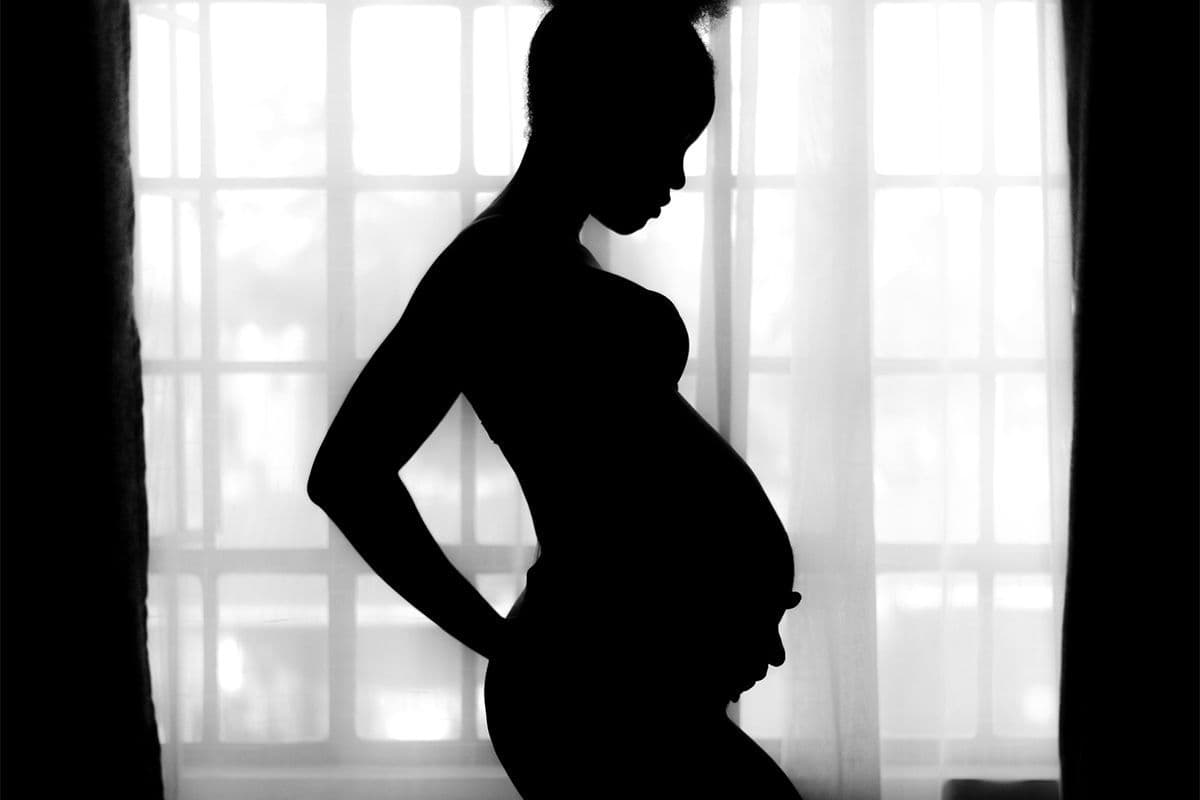Food Poisoning During Pregnancy
Medical Problems
Obie Editorial Team

What is food poisoning?
Food poisoning or foodborne illness is a foodborne disease caused by eating or drinking infected contaminated food or fluids and which could be more severe in pregnancy. The first symptoms are often nausea, vomiting, cramps, and diarrhea. It's also called "gastric flu" or "stomach flu." The medical terminology is "gastroenteritis" and it involves inflammation of the lining of the gut - in particular, of the stomach and intestines. Gastroenteritis is responsible worldwide for two to three million deaths each year, making it one of the most common causes of mortality. Food poisoning occurs when you are exposed to harmful organisms and certain types of bacteria, parasites, viruses, or toxins through eating or swallowing contaminated food or water.
The Centers for Disease Control and Prevention (CDC) in their 2016 yearly report estimates that each year in the United States, about 9.4 million people get ill from 31 known foodborne germs leading to about 1,350 deaths, and another 38.4 million get food poisoning from unknown causes, for a total of about 47 million per year. Each year roughly 1 in 6 Americans (or 48 million people) gets sick, 128,000 are hospitalized, and 3,000 die of foodborne diseases.
In the United States, most cases of food poisoning are due to common viruses and bacteria such as Norovirus, Salmonella, Staphylococcus, Escherichia coli (E. coli) or Campylobacter, more serious cases include Listeria or Toxoplasmosis.
Here are the most common organisms involved in food poisoning:
- Norovirus
- Salmonella
- Listeria
- Toxoplasma
- Botulism (Clostridium botulinum)
- Campylobacter enteritis
- Cholera
- E. coli enteritis
- Fish (scombroid) poisoning
- Ciguatera fish poisoning
- Staphylococcus aureus
- Shigella
What types of food poisoning are there?
Bacteria may get into your food in different ways:
- Meat or poultry may come into contact with intestinal bacteria when being processed.
- Water that is used during growing or shipping may contain animal or human waste.
- Improper food handling or preparation.
- Dairy products especially when not pasteurized (not heated appropriately)
How do I get food poisoning?
Food poisoning commonly occurs after eating undercooked or spoiled food in fast food or other restaurants, at picnics, school cafeterias, large social functions. One or more people may become sick.
- Any food prepared by someone who did not wash their hands properly.
- Any food prepared using unclean cooking utensils, cutting boards, or other tools
- Dairy products or food containing mayonnaise (such as coleslaw or potato salad) that have been out of the refrigerator too long
- Frozen or refrigerated foods that are not stored at the proper temperature or are not reheated properly
- Raw fish or oysters
- Raw fruits or vegetables that have not been washed well
- Raw vegetable or fruit juices and dairy
- Undercooked meats or eggs. Water from a well or stream, or city or town water that has not been treated
You may also at higher risk for food poisoning if you are pregnant, have a medical disease, or if you have an immune disorder.
In their 2016 report, the CDC mentioned that of the outbreaks where a specific food was identified, the categories most commonly implicated were fish, mollusks, dairy, and pork.
What are the symptoms of food poisoning?
The most common types of food poisoning generally cause symptoms within 2 - 6 hours of eating the food.
Possible symptoms include:
- Nausea
- Abdominal cramps
- Vomiting
- Diarrhea (e.g. loose stools that may be bloody)
- Fever and chills
- Headache
- Weakness (may be serious and lead to respiratory arrest, as in the case of botulism)
- Dehydration
What tests do I need?
Your doctor will examine you for signs of food poisoning, such as pain in the stomach and signs your body does not have as much water and fluids as it should. This is called dehydration.
You will be asked about the foods you have eaten recently.
Tests may be done on your blood, stools, vomit, or the food you have eaten to determine the cause of your symptoms. However, tests may not be able to prove that you have food poisoning.
In rare but possibly serious cases, your doctor may order a sigmoidoscopy, a procedure in which a thin tube placed in the anus to look for the source of bleeding or infection.
What is the treatment?
You will usually recover from the most common types of food poisoning within a couple of days. The goal is to make you feel better and make sure your body maintains the proper amount of fluids.
- Don't eat solid foods until diarrhea has passed, and avoid dairy products, which can worsen diarrhea (due to a temporary state of lactose intolerance).
- Drink fluids (except milk or caffeinated beverages or coffee) to replace fluids lost by diarrhea and vomiting.
- Give children an electrolyte solution sold in drugstores.
- If you have diarrhea and are unable to drink fluids (for example, due to nausea or vomiting), you may need medical attention and fluids given through a vein (by IV). This is especially true for young children.
If you take diuretics, you need to manage diarrhea carefully. Talk to your health care provider -- you may need to stop taking the diuretic while you have diarrhea. Never stop or change medications without talking to your health care provider and getting specific instructions.
For the most common causes of food poisoning, your doctor would NOT prescribe antibiotics.
You can buy medicines at the drugstore that help slow diarrhea. Do not use these medicines without talking to your health care provider if you have bloody diarrhea or a fever. Do not give these medicines to children.
If you have eaten toxins from mushrooms or shellfish, you will need medical attention right away. The emergency room doctor will take steps to empty out your stomach and remove the toxin.
Food poisoning during pregnancy
It is not unusual to get food poisoning during pregnancy and if severe, it can affect both you and the baby. Food poisoning does not happen more frequently in pregnancy, but when it's severe it can have an adverse effect on you and your baby, especially if certain harmful organisms are involved (eg listeria). Most people fully recover from the most common types of food poisoning within 12 - 48 hours. Serious complications can arise, however, from certain types of food poisoning.
Death from food poisoning in people who are otherwise healthy is rare in the United States and other developed countries.
Possible complications of food poisoning
Dehydration is the most common complication. This can occur from any of the causes of food poisoning. Less common but much more serious complications depend on the bacteria that are causing food poisoning. These may include arthritis, bleeding problems, kidney problems, damage to the nervous system, and swelling or irritation in the tissue around the heart.
When to contact a doctor
Call for an appointment with your doctor if you have:
- Blood or pus in your stools
- Black stools
- Stomach pain that does not go away after a bowel movement
- Symptoms of dehydration (thirst, dizziness, light-headedness)Diarrhea with a fever above 101°F (100.4°F in children)
- Recently traveled to a foreign country and developed diarrhea.
- Diarrhea gets worse or does not get better in 2 days for an infant or child, or 5 days for adults
- A child over 3 months old has been vomiting for more than 12 hours; in younger babies, call as soon as vomiting or diarrhea begins, go to the emergency room, or call your local emergency number, such as 911, if:
- Bleeding is excessive or your stools are maroon or black
- You may have poisoning from mushrooms, fish, or botulism
- Your heart is racing, pounding, or skipping
The main cause of gastroenteritis is when you eat contaminated or infected food, in which case the gastroenteritis is called "food poisoning". Gastroenteritis and by extension food poisoning are usually caused by viruses, bacteria, or parasites; when the source of such infection is contaminated food, it is called food poisoning.
Whether you are pregnant or not, the main symptoms of food poisoning are:
- nausea
- vomiting
- diarrhea
- stomach cramps
More serious problems include fever, dehydration, and weight loss. Most cases of food poisoning are mild and take care of themselves within a few days. However, there are quite a few serious infections you can get by eating contaminated food during pregnancy which can possibly harm the pregnancy. The most common agents that could be a problem are listeriosis, toxoplasmosis, salmonellosis, and campylobacteriosis.
Listeriosis
Listeriosis is a form of infection that may result when foods containing the bacteria Listeria monocytogenes are consumed. L. monocytogenes is widely distributed in nature and is found in soil, groundwater, plants, and animals. L. monocytogenes is often carried by humans and animals and has the ability to survive unfavorable conditions, including refrigeration temperatures, food preservatives (salt), and conditions with little or no oxygen. It is, however, easily destroyed by cooking. Infection from L. monocytogenes typically occurs in individuals with a weakened immune system, including pregnant women.
There is an estimated 14-fold increase in the incidence of listeriosis among pregnant women. Pregnant women make up 27 percent of all cases of listeriosis. Once in the bloodstream, Listeria bacteria can travel to any site but seem to prefer the central nervous system and the placenta. The fetus is unusually prone to infection from L. monocytogenes, which can lead to a miscarriage, stillbirth, or infection of the neonate and health problems following birth.
Gastrointestinal symptoms may appear within 2 to 3 days of exposure. If the body does not clear itself of the pathogen and the infection becomes invasive, symptoms such as fever, chills, headache, muscle aches, and backaches may develop in 11 to 70 days after exposure. A blood test can determine if symptoms are caused by Listeria infection and if confirmed, the patient can then be treated with antibiotics.
Foods typically associated with listeriosis have a long shelf life and are eaten without further cooking. Outbreaks have involved foods such as coleslaw, Mexican-style soft cheeses, milk, pâté, pork tongue, hot dogs, processed meats and deli salads. Examples of foods that may harbor this pathogen include unpasteurized milk, raw milk products, raw and smoked seafood, and any ready-to-eat processed foods, such as hot dogs, luncheon meats or deli meats, that have not been heated to proper temperatures before serving.
To avoid infection from L. monocytogenes, pregnant women are advised to practice safe food handling procedures, such as storing all perishable foods at or below 40 degrees F and using perishable or ready-to-eat foods as soon as possible. If a potentially hazardous perishable food cannot be eaten within four days, it is best to freeze or discard it. Kitchen surfaces, cutting boards, and utensils should be washed before and after food preparation (especially after contact with raw meat or poultry). Pregnant women are advised to avoid eating soft cheeses made from raw milk (e.g., Feta, Brie, Camembert, blue-veined cheeses, queso fresco, queso blanco and Panela), unpasteurized milk and foods made from raw milk, raw or undercooked seafood, refrigerated smoked or precooked seafood, deli seafood salads, and hot dogs, luncheon meats, deli meats and pâté unless reheated to steaming hot before serving or reformulated to prevent Listeria. Leftover foods should be reheated to 165 degrees F before eating.
Toxoplasmosis
Toxoplasmosis, the infection caused by the parasite Toxoplasma gondii, can be passed to humans by water, dust, soil, or through eating contaminated foods. Cats are the main host for T. gondii, and the only host where the parasite can complete its life cycle. T. gondii may be carried in the fur or feces of cats and then passed to other animals and people. If an animal becomes infected and its meat is then eaten raw or undercooked, the parasite is passed to the human or animal that consumes the meat.
It is estimated that 1.5 million people in the U.S. become infected with T. gondii each year. Most individuals do not experience recognizable symptoms, and will develop a protective resistance to the parasite. However, if a woman not previously exposed to T. gondii first acquires the parasite a few months before or during pregnancy, she may pass the organism to the fetus. This could result in stillbirth, early prenatal death, or serious health problems for the baby after birth such as eye or brain damage. Symptoms in the baby may not be visible at birth but can appear months or even years later.
If symptoms of infection with T. gondii do appear in the pregnant woman, they usually appear about 10 days after exposure to the parasite and include a low-grade fever with rash, muscle aches, headache and possibly swelling of the lymph nodes. Infection may be confirmed by a blood test and treated with antibiotics. Prompt treatment of the mother with antibiotics reduces the risk of passing the parasite to the fetus, but cannot change the course of the disease once the fetus has been exposed.
Toxoplasmosis most often results from eating raw or undercooked meat, eating unwashed fruits and vegetables, cleaning a cat litter box or handling contaminated soil. To avoid infection from T. gondii it is important that pregnant women practice safe food handling procedures such as washing all surfaces, cutting boards and utensils with hot, soapy water, especially those that come in contact with raw meat. Pregnant women should wash hands often, especially after handling animals or working in the garden, avoid eating raw or undercooked meat (particularly mincemeat, mutton, and pork), and if they own or take care of a cat, make sure the litter box is changed every day, preferably by a friend or family member.
Salmonellosis
Salmonellosis is a common form of food infection that may result when foods containing Salmonella bacteria are eaten. The bacteria are spread through direct or indirect contact with the intestinal contents or waste of animals, including humans. It is estimated that 2 million cases of salmonellosis occur each year in the United States. Salmonella bacteria do not grow at refrigerator or freezer temperatures and are easily destroyed by heating foods to 165 degrees F.
Symptoms of salmonellosis include headache, diarrhea, abdominal pain, nausea, chills, fever, and vomiting; these usually appear within 12 to 36 hours after eating the contaminated food. Foods most often involved include raw (unpasteurized) milk and raw milk products, raw or undercooked meat and poultry, raw or undercooked eggs, raw sprouts (alfalfa, clover, radish, broccoli), salads (including chicken, tuna, potato), and cream desserts and fillings.
To avoid infection from Salmonella bacteria, pregnant women should follow general safe food handling practices, including washing hands often with hot, soapy water, especially after using the bathroom and before and after handling food. Hands and working surfaces should be thoroughly washed after contact with raw meat, fish, poultry, and foods that will not undergo further cooking. Fresh fruits and vegetables should be rinsed well before eating, and food such as raw milk and raw milk products, raw or undercooked eggs, raw sprouts, raw or undercooked meat and poultry, and unpasteurized fruit juices should be avoided.
Pregnant women are not at an increased risk for getting salmonellosis; however, one type of Salmonella bacteria, called Salmonella typhi may be passed to the fetus. S. Typhi is rare in the United States, but if transmitted to the fetus, can cause abortion, stillbirth or premature labor.
Campylobacteriosis
Consuming food or water that contains the bacteria Campylobacter jejuni causes an infection called campylobacteriosis. C. jejuni is found in the intestinal tracts of animals (especially chickens) and in untreated water. It's a very common cause of diarrhea accompanied by fever in the United States. This organism thrives in a reduced oxygen environment and is inhibited by acid, salt and drying. C. jejuni also is easily destroyed by heat (120 degrees F).
Although pregnant women are not at an increased risk of campylobacteriosis, infection from this bacteria can result in transmission to the placenta. Consequences of fetal infection include abortion, stillbirth or preterm delivery. Symptoms usually appear within 2 to 5 days after eating the contaminated food and include fever, stomach cramps, muscle pain, diarrhea, nausea, and vomiting. Infection from C. jejuni may be treated with antibiotics.
C. jejuni is most often found in raw (unpasteurized) milk and raw milk products, raw or undercooked meat and poultry, and raw shellfish. To avoid campylobacteriosis, pregnant women are advised to consume only pasteurized milk and milk products and to thoroughly cook meat, poultry, and shellfish. Hands, surfaces, cutting boards and utensils that come in contact with raw meat, poultry or fish should be washed well with hot, soapy water.











